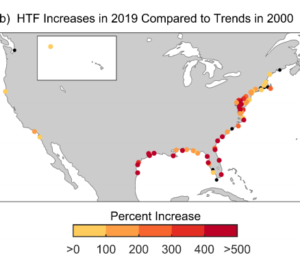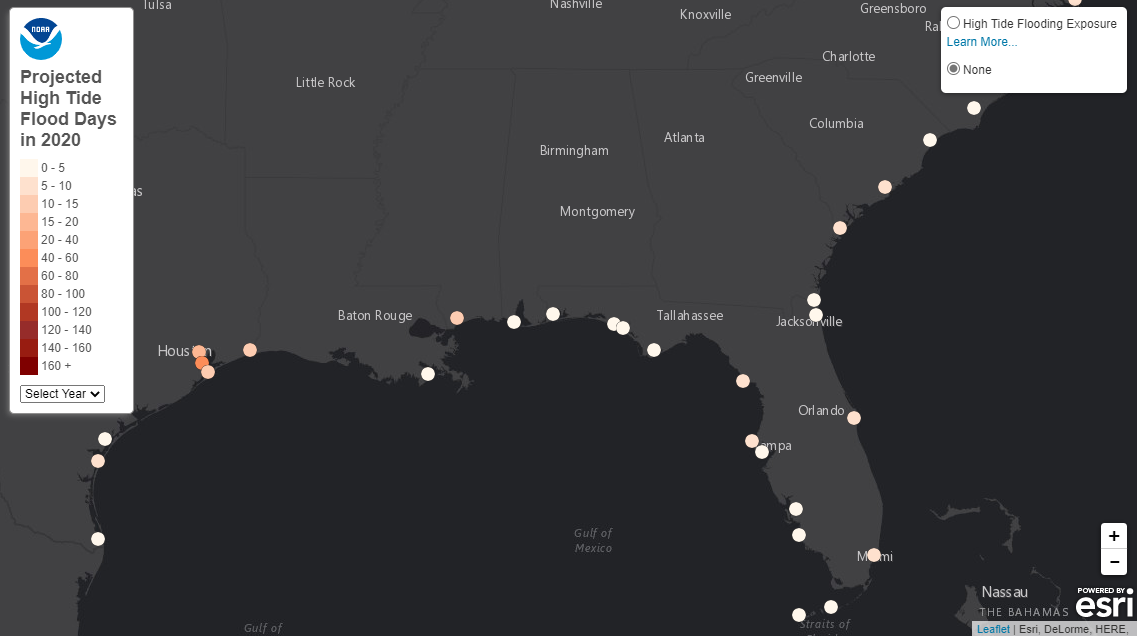2 of 15 Florida tide stations set records
 Florida has seen a trend in the past decade of rising sea levels along its coastlines. It’s been causing high-tide flooding in a few areas, which is growing in severity, according to a new report from the National Oceanic and Atmospheric Administration (NOAA). This is so called “sunny day flooding” when the high tides spill into streets or rise up from storm drains.
Florida has seen a trend in the past decade of rising sea levels along its coastlines. It’s been causing high-tide flooding in a few areas, which is growing in severity, according to a new report from the National Oceanic and Atmospheric Administration (NOAA). This is so called “sunny day flooding” when the high tides spill into streets or rise up from storm drains.
According to NOAA’s 2019 State of High Tide Flooding and 2020 Outlook, coastal communities across the country continued to see record-setting high tide flooding (HTF) in 2019, with the trend expected to continue into 2021. Of the 25 locations where HTF in 2019 was above the predicted range, 19 broke their all-time records, including two in Florida: Virginia Key in Miami with 9 days of flooding and Cedar Key on the west coast with 11 days.
Among the 15 tide stations in Florida monitored by NOAA, four of them, including Virginia Key and Cedar Key, had between 5-10 high tide flood days in 2019. The other two were Trident Pier on Cape Canaveral with 8 days last year and Clearwater with 4 days. These four are expected to see the same range this year.

High Tide Flooding Trends & Outlooks for each tide station in S.E. (NOAA)
Other highlights from the report:
- In 2019, the national annual flood frequency reached 4 days (median value), just shy of the record of 5 days set in 2018. High tide flooding is now accelerating at 75% of locations along the East and Gulf Coasts.
- Through May 2021, the national high tide flood frequency is expected to accelerate, with U.S. coastal communities seeing an average of 2 to 6 days of flooding in the coming year. Communities along the northeast and western Gulf coasts will see higher levels. No HTF is predicted for the U.S. Island coastlines.
- By 2030, high tide flooding is likely to be in the range of 7 – 15 days and by 2050, if the trend continues, between 25 – 75 days. These long term outlooks are based on the range of relative sea level rise ‘more likely’ to occur by 2030 and 2050 using projections of the Fourth National Climate Assessment.
“As sea-level rise continues, damaging floods that decades ago happened only during a storm now happen more regularly, such as during a full-moon tide or with a change in prevailing winds or currents,” said Nicole LeBoeuf, acting director of NOAA’s National Ocean Service.
For more information on flood risk and protection, please visit our Flood Insurance & Resilience webpage.
LMA Newsletter of 7-20-20

